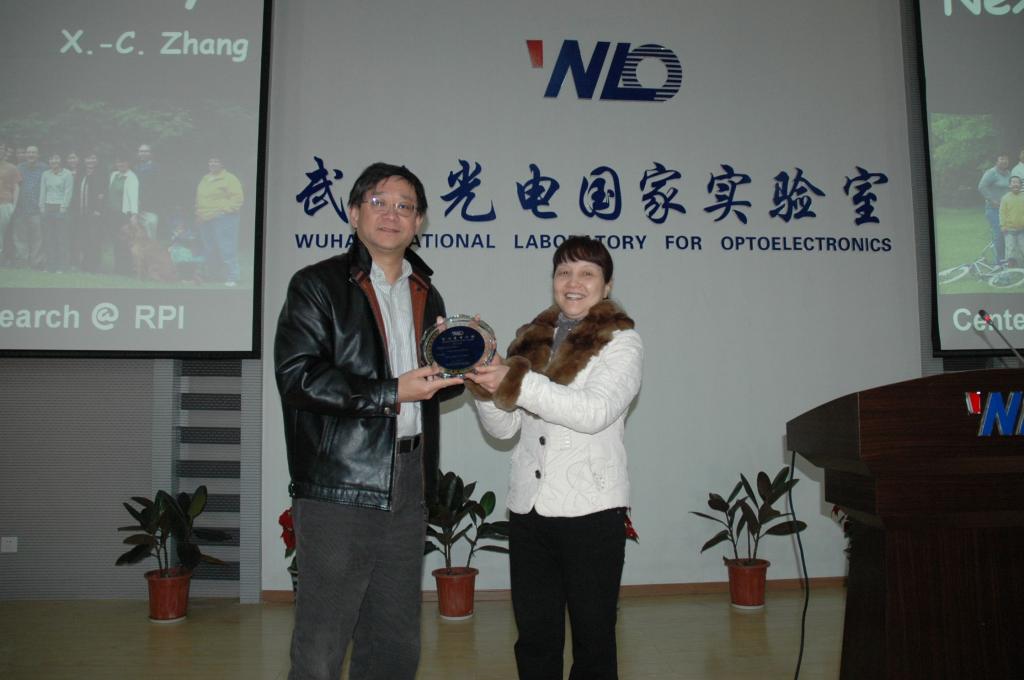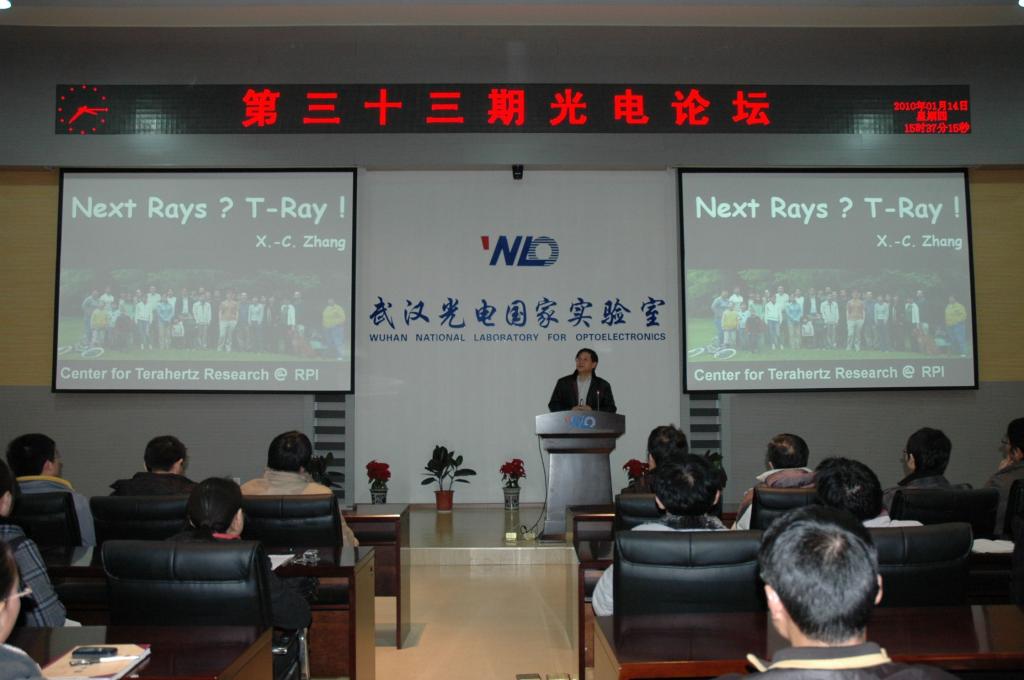Title: Next Rays? T-Ray!
Speaker: Prof. X.C. Zhang
Time: Jan.14.2010,15:30PM
Venue: Room A101 At WNLO
Abstract:
The thwarted terrorism attempt aboard a Delta flight on Christmas has raised public concerns and forced governments to search out more efficient, alternative sensing and imaging systems to protect civilian life in transportation sectors. The implementation of full-body scans at major airports using different electromagnetic waves or rays is now a hot topic worldwide. Terahertz (THz) radiation, or T-ray, which occupies a large portion of the electromagnetic spectrum between the infrared and microwave bands, offers innovative imaging and sensing technologies that can provide information not available through conventional methods (i.e. microwave and X-ray techniques). Historically, THz technologies were mainly used within the astronomy community for searching far-infrared radiation (cosmic background), and the laser fusion community for the diagnostics of plasmas. Since the first demonstration of THz wave time-domain spectroscopy in the late 80’s, there has been a series of significant advances (particularly in recent years) as intense THz sources and more sensitive detectors provide new opportunities for understanding the basic science within the THz frequency range. I will provide a basic introduction to THz wave sensing and imaging science, technology and its applications, with an emphasis on spectroscopic and imaging capabilities. The most recent results of using air (and selected gases) as the emitter and sensor material for both generation and detection of broadband THz waves will also be reported. Air, especially ionized air (plasma), has been used to generate intense THz waves (>1 MV/cm) with a broadband spectrum (0.1 THz to 50 THz). As THz wave (T-ray) technology improves, we believe new THz wave sensing and imaging capabilities will impact a range of interdisciplinary fields, including: communications, imaging, medical diagnosis, health monitoring, environmental control, and chemical and biological identification. Continued advances are pivotal for the protracted use of THz technology for non-destructive evaluation (immediate application), for homeland security (three to five years), and for medical diagnosis or even clinical treatment in biomedical applications (five to ten years).

